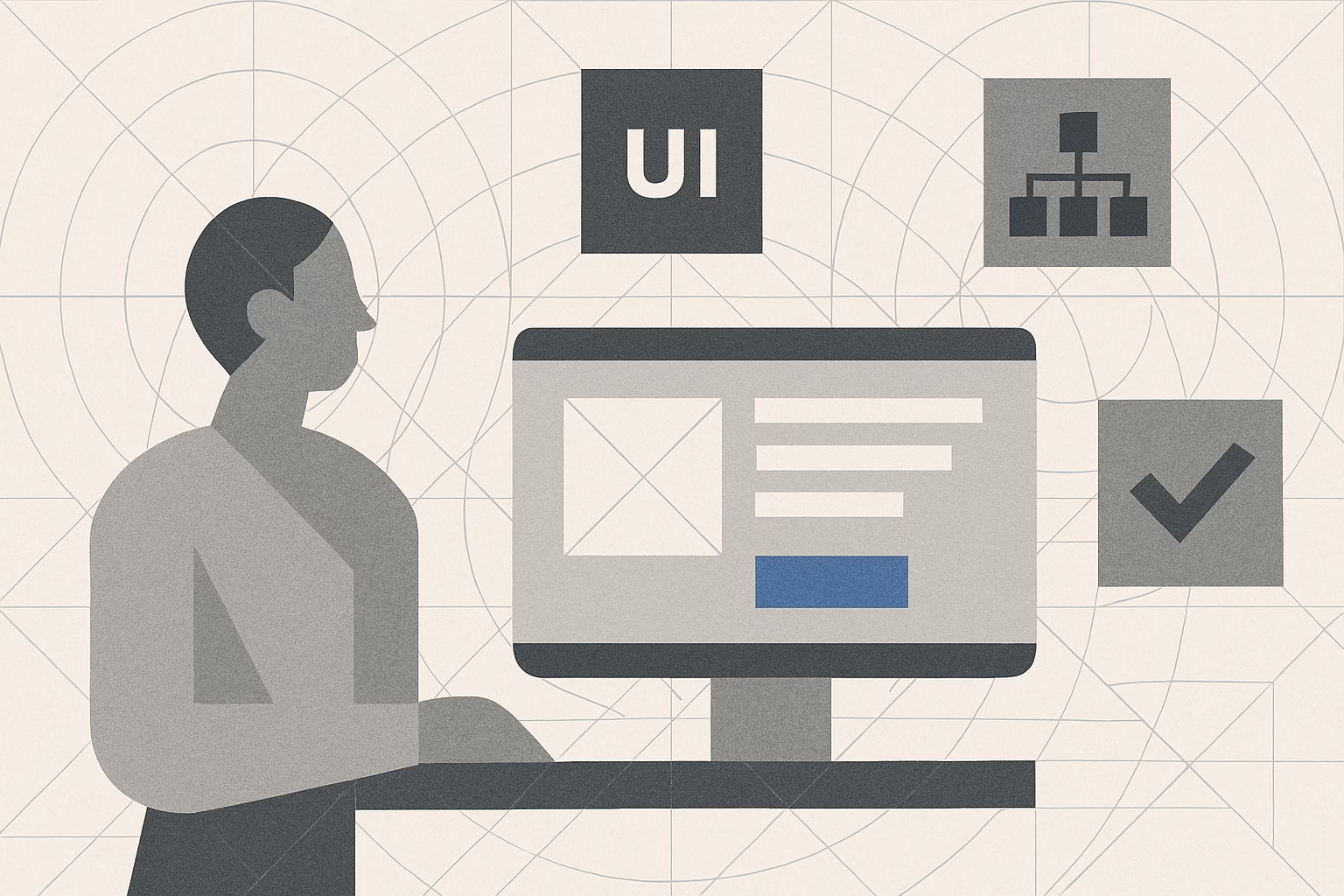User experience design is more than a pretty interface—it’s about solving problems and ensuring users achieve their goals with ease. However, even experienced designers can fall into common pitfalls that negatively impact usability. Let’s dive into the top 5 UX design mistakes and how you can avoid them to create more effective, user-centric products.
1. Ignoring User Research
The Mistake:
Relying solely on assumptions instead of gathering insights from real users can lead to designs that don’t address actual pain points. It’s easy to become enamored with personal ideas, but what works for you may not resonate with your audience.
How to Avoid It:
- Conduct Surveys and Interviews: Engage with your target audience through surveys, interviews, and user tests. Tools like SurveyMonkey or Google Forms can quickly gather valuable insights.
- Create Detailed Personas: Develop user personas that represent the diverse spectrum of your audience. This helps ensure that design decisions are backed by user data.
- Iterative Testing: Regularly test prototypes with users and refine your designs based on their feedback.
By integrating user research into every stage of your design process, you’ll build products that truly meet user needs.
2. Neglecting Accessibility
The Mistake:
Often seen as an afterthought, accessibility should be a core component of UX design. Failing to design for users with disabilities can not only alienate part of your audience but also lead to legal issues and a poor overall experience.
How to Avoid It:
- Adopt WCAG Guidelines: Familiarize yourself with the Web Content Accessibility Guidelines (WCAG) and apply these principles from the outset.
- Use Accessible Color Schemes: Ensure sufficient contrast between text and background and avoid relying solely on color to convey information.
- Implement Keyboard Navigation and ARIA Roles: Confirm that your interfaces are fully operable via keyboards, and use ARIA attributes to help assistive technologies interpret your UI.
Making accessibility a priority from the start enhances the usability of your designs for everyone.
3. Overcomplicating Navigation
The Mistake:
An intricate or cluttered navigation system can overwhelm users and lead them to abandon your product. The challenge is in balancing comprehensive options with clarity and ease of access.
How to Avoid It:
- Keep It Simple: Focus on the essentials and streamline the navigation menu. Limit the number of options to avoid overwhelming your users.
- Clear Information Architecture: Organize content logically. Use card sorting and user tests to determine the best layout.
- Consistent Design Patterns: Ensure navigational elements are uniform across pages, so users always know where they are and how to find what they need.
Clear, intuitive navigation can significantly boost user engagement and retention.
4. Failing to Optimize for Mobile
The Mistake:
With a growing number of users accessing digital products via mobile devices, neglecting mobile optimization can drastically compromise user experience. A desktop-centric design often falls flat on smaller, touch-based screens.
How to Avoid It:
- Responsive Design: Utilize frameworks like Bootstrap or implement CSS media queries to adapt your design seamlessly to different screen sizes.
- Touch-Friendly Interfaces: Optimize buttons and interactive elements for touch, ensuring they have ample space and are easy to tap.
- Prioritize Performance: Mobile users typically have slower network connections, so optimize images, reduce load times, and streamline code.
A mobile-first approach ensures that your product is accessible and efficient across all devices.
5. Inconsistent UI Patterns
The Mistake:
Inconsistency in UI elements—whether in button styles, fonts, or layouts—can confuse users and diminish trust. A cohesive design reinforces your brand and supports an intuitive user journey.
How to Avoid It:
- Develop a Design System: Use tools like Sketch, Figma, or Adobe XD to create reusable components and establish a style guide. Document these patterns for consistency.
- Standardize Interactions: Ensure that similar elements behave the same way across your product. This helps reduce the learning curve for users.
- Regular Audits: Conduct regular design reviews to ensure all parts of your product adhere to the established guidelines.
Maintaining consistency across your UI builds credibility and allows users to navigate your product with confidence.
Final Thoughts
Avoiding these common UX pitfalls requires a commitment to user-centric design and continuous improvement. By integrating user research, emphasizing accessibility, streamlining navigation, optimizing for mobile, and ensuring consistency, you create designs that are not only visually appealing but also highly functional.
Remember: Great UX is an ongoing process. Test frequently, listen to user feedback, and be willing to iterate. As you refine your process, you’ll build products that truly resonate with users and stand out in a competitive landscape.
Additional Tips and Resources
- Case Studies: Look for real-world examples to see how companies have turned these pitfalls into opportunities for excellence.
- Tools and Guides: Explore platforms like Nielsen Norman Group for deeper insights into usability testing and UX best practices.
- Join Communities: Engage with the UX community on forums like UX Stack Exchange or follow newsletters to stay updated on emerging trends.
Feel free to share your insights or questions in the comments section—let’s foster a dialogue that helps us all improve our UX designs. What’s the next challenge in your design journey? Let’s explore it together!


